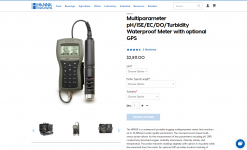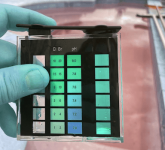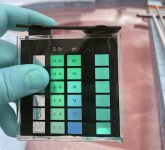The PH60 is great. I'm struggling with the darker reddish shades of the pH test and went down the pH meter route for that reason, and don't regret it. Another advantage is that it's not affected by higher FC, so I don't have to worry about not being able to test pH when my FC gets a bit higher.
Important is regular calibration, and to always store it in 3M KCl storage solution. My experience is that calibration is very stable when always doing so.
I just replaced my PH60 (after about 3 years) because it started to take longer and longer for the readings to drift to the final value (they were still accurate). Advantage of the PH60 over the cheaper PH20 is that you can replace just the sensor head. (At least in the US. Proved difficult in Australia, because Apera charges insane amounts for international shipping. I found a replacement sensor on Amazon, but that proved to be a dudd, calibration didn't hold. Didn't bother with weeks worth of fussing with returning it to Amazon US, and bought a full new meter after all from the Aussie distributor, which is working properly now.)
Anyway, the point I wanted to make is, that in the beginning, the new meter (as did the original one three years ago) kept loosing the calibration over a week or so, but after storing it permanently in storage solution, this settled down after a couple of weeks, and the calibration now remains stable for weeks (the dudd didn't stabilise, cal kept drifting). But still important to check the calibration regularly - there are a few threads here where folks got mislead by uncalibrated meters.






